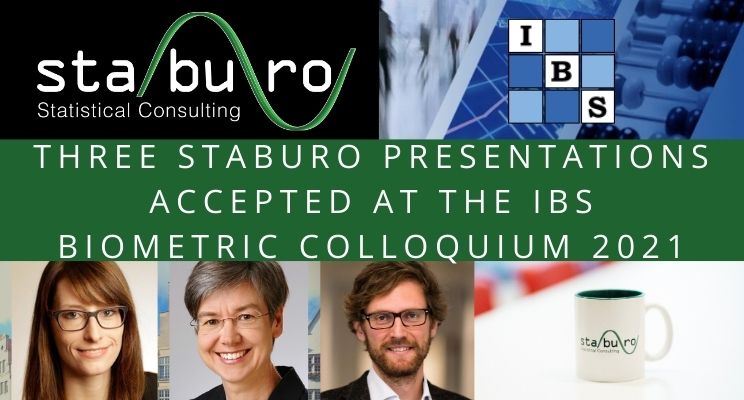
Staburo presents @ IBS Biometric Colloquium 2021

Three Staburo presentations at the Biometric Colloquium Conference in March 2021
Three presentations by Staburo members have been accepted at the Biometric Colloquium “Scenes from Biostatistics” virtual conference of the German Region of the International Biometric Society (IBS-DR) that will take place from March 14 to 17, 2021 (https://www.biometrisches-kolloquium2021.de/en/startseite-english/).
Laura Schlieker will present “Precision medicine in action – the FIRE3 NGS study”, which is co-authored with Nicole Krämer (MorphoSys), Volker Heinemann (University Hospital, University of Munich and DKTK), Arndt Stahler (DKFZ), and Sebastian Stintzing (DKTK and DKFZ).
Gabriele Bleckert’s presentation will be “Tumour-growth models improve progression-free survival estimation in the presence of high censoring-rates”, on which she has worked with Hannes Buchner (Staburo).
Hannes Buchner’s talk is titled “Evaluation of event rate differences using stratified Kaplan-Meier difference estimates with Mantel-Haenszel weights” and is based on joined work with Stephan Bischofberger (Staburo) and Rainer-Georg Goeldner (Boehringer-Ingelheim).
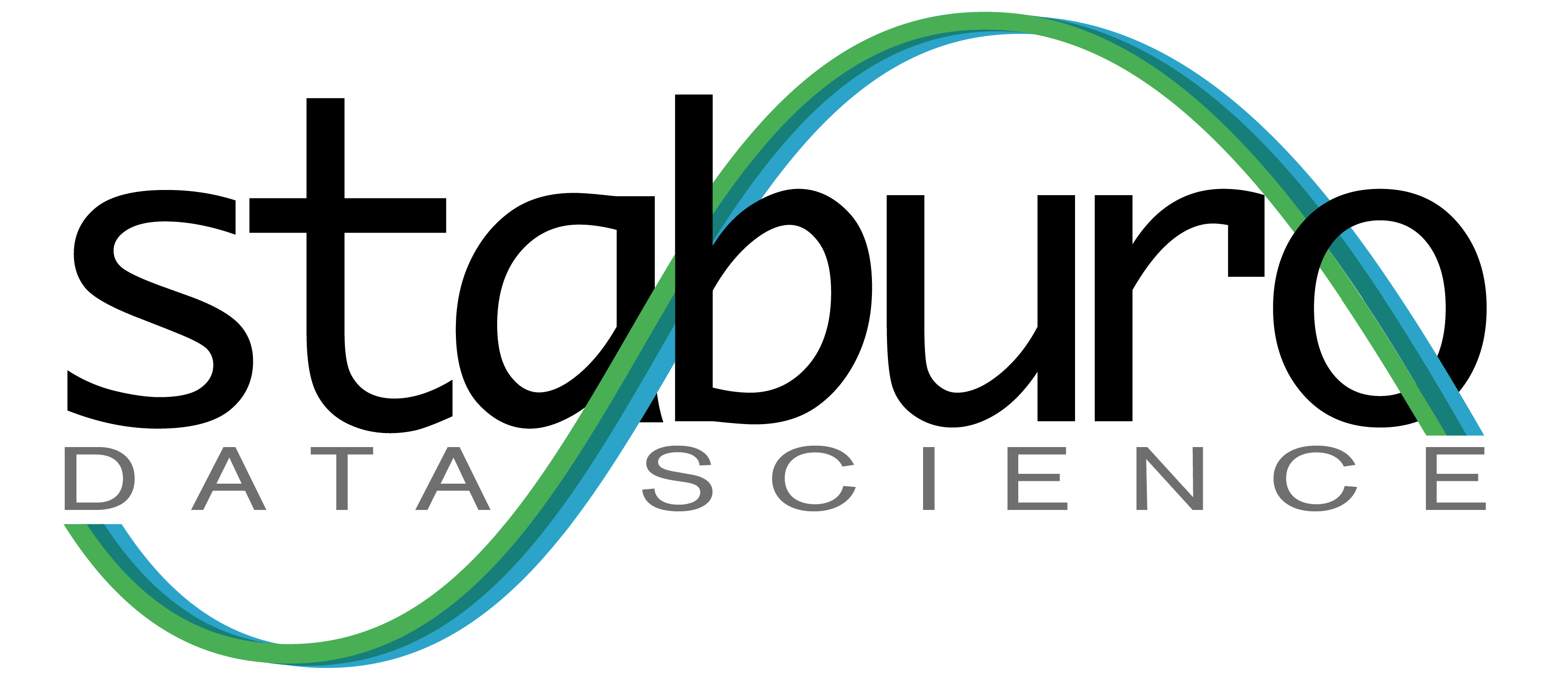
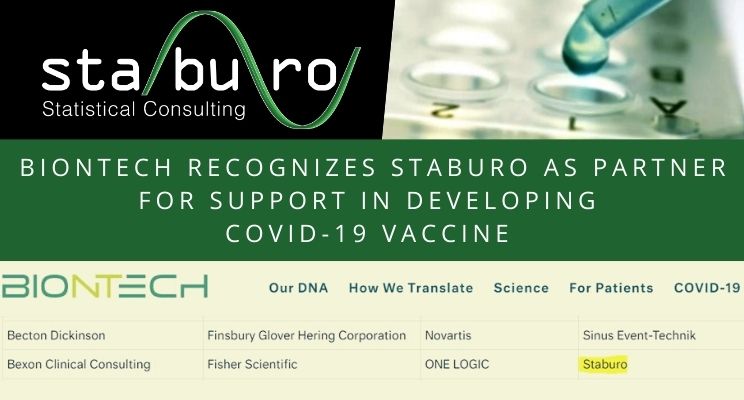
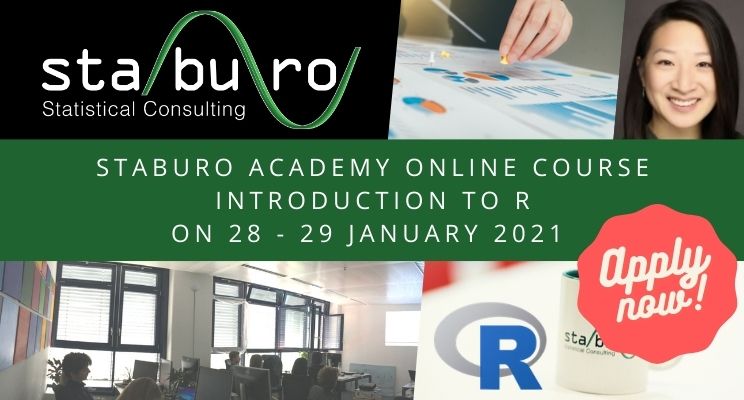

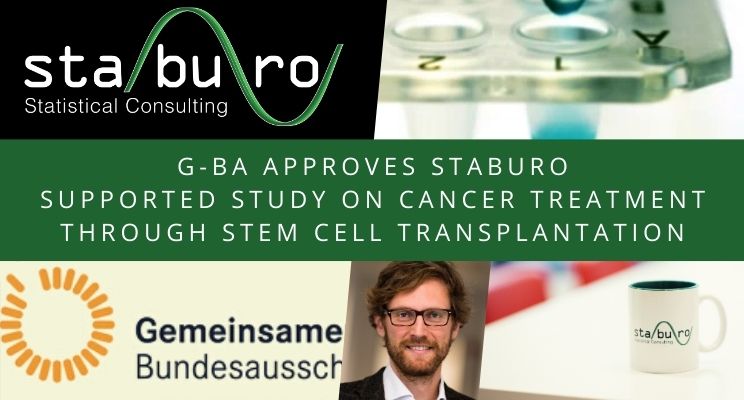
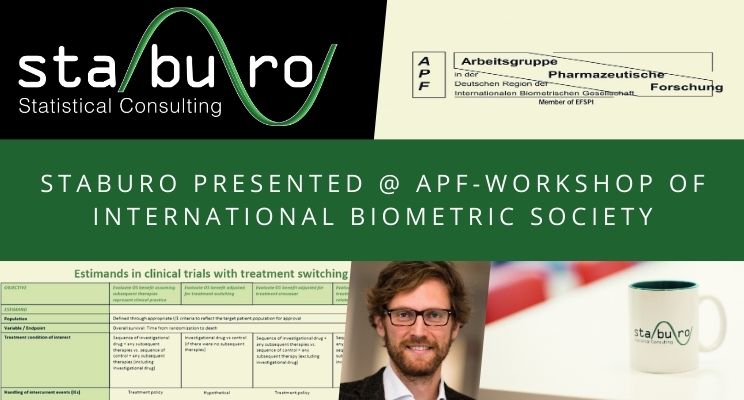
Recent Comments